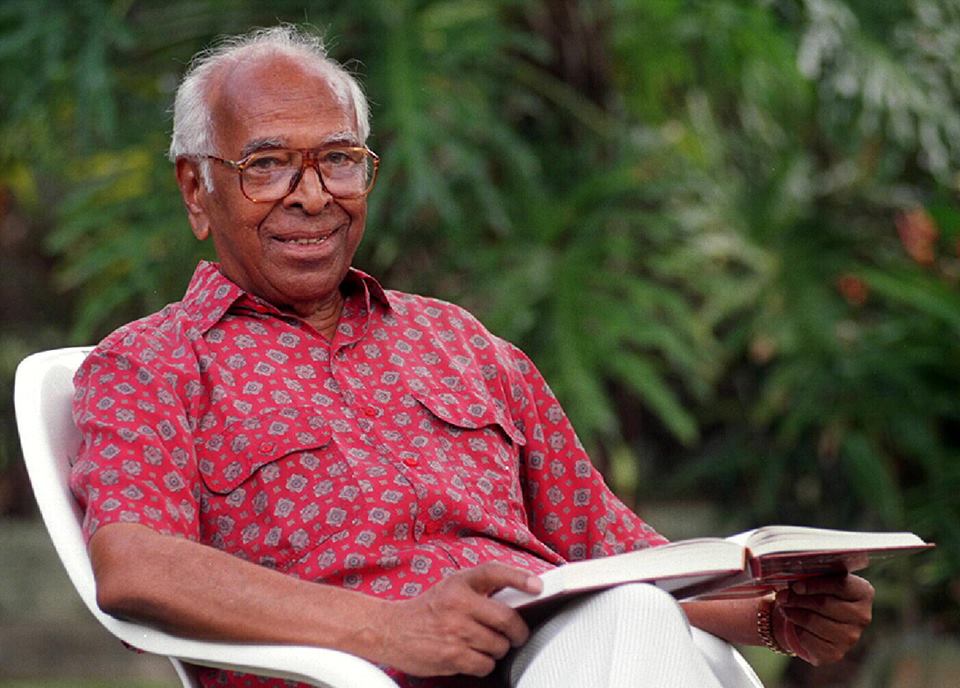A $100 million endowment, set up by Temasek Holdings, was launched yesterday to honour the late S Rajaratnam.
Its objective is to deepen regional ties, based on the twin pillars of good governance and sustainability. Its flagship programme, the annual Singapore Forum, will be launched in April 2015.
The Endowment honours the memory and values of Rajaratnam, Singapore's first Foreign Minister (1965-1980) and one of the pioneer leaders of Singapore.
So what is Rajaratnam's impact on regular Singaporeans?
Here are five examples of how the spirit of S Rajaratnam lives in every Singaporean:
1. Our National Pledge
Our national pledge, which is recited at daily school assemblies and national day ceremonies is largely drafted by Rajaratnam.
Below is Rajaratnam's draft:
"We, as citizens of Singapore, pledge ourselves to forget differences of race, language and religion and become one united people; to build a democratic society where justice and equality will prevail and where we will seek happiness and progress by helping one another".
Final version:
"We, the citizens of Singapore, pledge ourselves as one united people, regardless of race, language or religion, to build a democratic society, based on justice and equality, so as to achieve happiness, prosperity and progress for our nation".
2. The principles of Singapore's foreign policy
Source: Ministry of Foreign Affairs
Rajaratnam spoke at the General Assembly of the United Nations (UN) on 21 Sep 1965, , after Singapore was admitted to the UN.
He declared that Singapore stood loyally and unflinchingly by the three essential principles of:
(i) preservation of peace through collective security;
(ii) promotion of economic development through mutual aid, and;
(iii) the inalienable right of every country to establish forms of government in accordance with the wishes of its own people.
Check out some of his remarks that still endures today:
It is practical self interest and not vague idealism which makes it necessary for Singapore to give loyal support to these elements in the U.N. Charter...We believe that ultimately our defence and security must be secured through the collective and effective strength of the UN.
Singapore has chosen the path of non-alignment. It simply means that we do not wish to be drawn into alliances dedicated to imposing our own way of life on other countries.
We are a multi-racial society constituted out of the three major racial stocks of Asia - Chinese, Malay and Indian - in addition to Arabs, Ceylonese, Eurasians and others...The multi-racial and multi-cultural character of Singapore has made us somewhat sceptical of those who preach the superiority and exclusiveness of one culture and one race.
3. The concept of Singapore as a Global City
In 1972, Rajaratnam used the term "Global City" to describe the role and aspiration of Singapore and to explain the reasons for its economic success.
"If we view Singapore's future not as a regional city but as a Global City, then the smallness of Singapore, the absence of a hinterland, or raw materials and a large domestic market are not fatal or insurmountable handicaps...Once you see Singapore as a Global City, the problem of hinterland becomes unimportant because for a Global City, the world is its hinterland."
4. Television in Singapore
S'poreans gathered at the Victoria Memorial Hall for the launch of Singapore’s first television station. Source
No, he did not invent the television, like how former US Vice President Al Gore "invented the Internet".
But Rajaratnam, who was then Minister for Culture, helped launch the first Singapore television station in 1960.
He was also the first image people saw on the television screen on 15 February 1963.
Rajaratnam, who was then Minister for Culture, proclaimed that “tonight might well mark the start of a social and cultural revolution in our lives." He added that "television can, far more effectively than any other medium of communication, broaden the intellectual horizons of the ordinary man" if used intelligently and responsibly.
5. One of the Founding fathers of the Association of Southeast Asian Nations (ASEAN).
Source: ASEAN Facebook Page
Rajaratnam worked together with representatives from Indonesia, Malaysia, the Philippines and Thailand to establish the Association of Southeast Asian Nations (ASEAN) in 1967.
Rajaratnam was one the five signatories of the Bangkok Declaration of 1967, the founding document of ASEAN. In 1997, he was honoured with four other members with an award by ASEAN for his contributions.
Related article:
Top photo from S Rajaratnam Endowment Facebook Page.
If you like what you read, follow us on Facebook and Twitter to get the latest updates.
If you like what you read, follow us on Facebook, Instagram, Twitter and Telegram to get the latest updates.



